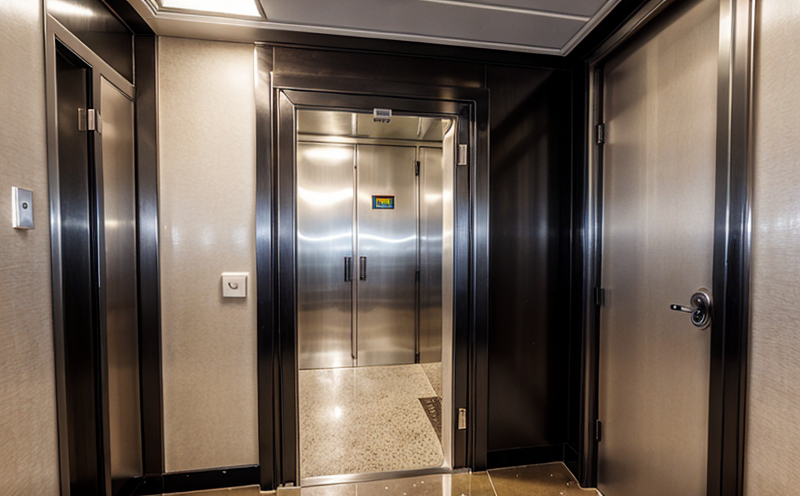Panoramic elevator inspection
The panoramic elevator inspection is a comprehensive and advanced testing procedure designed to ensure the safety and reliability of elevators in high-traffic environments. This service utilizes state-of-the-art technology to provide an all-encompassing evaluation, covering every component from the mechanical structure to the operational systems.
Our approach ensures that no detail is overlooked, making it a vital tool for quality managers and compliance officers aiming to meet international standards such as ISO 18760-1:2019. The panoramic inspection not only adheres strictly to these guidelines but also goes beyond them by incorporating cutting-edge methodologies.
The process begins with a thorough review of the elevator's design and installation against relevant codes like ASME A17.1/AWS D1.1, followed by an in-depth examination using advanced imaging techniques. These technologies allow for non-invasive assessments that can detect potential issues before they become critical failures.
During the inspection, we employ a variety of specialized equipment to assess various aspects including but not limited to:
- Mechanical integrity
- Electrical systems and controls
- Pneumatic components where applicable
- Safety mechanisms such as emergency stops and door operation
- Structural soundness of the shafts and hoistways
Once completed, our team provides detailed reports highlighting any deficiencies found during the inspection. These insights help facilities maintain compliance with regulatory requirements while also preventing costly downtimes by identifying latent problems early.
The panoramic elevator inspection is particularly beneficial for organizations operating large fleets of elevators or those responsible for maintaining public spaces where safety is paramount. By leveraging this service, businesses can enhance their reputation as leaders in occupational health and safety practices.
Quality and Reliability Assurance
To ensure consistent quality and reliability across all inspections, we follow stringent procedures outlined by recognized standards such as ASME A17.1 and EN 81-20:2014. Our commitment to excellence is reflected in the rigorous training our inspectors receive before they begin working with us.
A key aspect of maintaining high-quality results involves regular calibration of all testing equipment used during inspections. This ensures that every measurement taken during an inspection remains accurate and reliable throughout its lifecycle.
| Equipment Type | Frequency of Calibration |
|---|---|
| Elevator Load Cells | Annually or every 1,000 hours of operation, whichever comes first. |
| Safety Gate Sensors | Quarterly |
| Camera Systems Used in Inspections | Every six months or after any significant damage to the camera. |
Environmental and Sustainability Contributions
The panoramic elevator inspection plays a crucial role in promoting sustainable practices within building management. By identifying areas where energy consumption can be optimized, our inspections contribute directly to reducing the carbon footprint associated with daily operations.
For example, if an old motor is found during an inspection that operates inefficiently compared to modern standards, replacing it could lead to significant savings in electricity costs over time. Additionally, ensuring proper maintenance schedules helps prevent malfunctions which might otherwise result in increased energy usage while the system struggles to meet demand.
Moreover, by adhering strictly to environmental regulations like ISO 14001:2015, we help facilities comply with local laws concerning waste management and resource conservation. This holistic approach ensures that every aspect of elevator operation contributes positively towards creating a more sustainable future.
Use Cases and Application Examples
| Use Case Scenario | Outcome |
|---|---|
| Regular maintenance of a commercial building's elevators to ensure compliance with local regulations. | Avoidance of penalties for non-compliance and enhanced safety for building occupants. |
| Detecting early signs of wear on critical components in an office complex elevator fleet. | Preventive maintenance actions taken to extend the life cycle of elevators, minimizing disruptions due to unexpected breakdowns. |
| Evaluating newly installed elevators before they go into service at a new healthcare facility. | Safety certification obtained, ensuring compliance with relevant health and safety regulations. |





